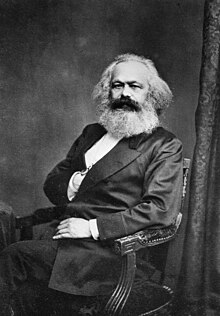The Modern Theatre Is the Epic Theatre
[1] This framework, written as a set of notes to accompany Brecht's satirical opera, ‘Rise and Fall of the City of Mahagonny’, explores the notion of "refunctioning" and the concept of the Separation of the Elements.
[3] Brecht's presentation of this theatrical structure adopts a style that is austere, utilitarian and remains instructional rather than systematically categorising itself as a form that is built towards a more entertaining and aesthetic lens.
[5] The purpose of this new avant-garde outlook on theatrical performance aimed to “exhort the viewer to greater political vigilance, bringing the Marxist objective of a classless utopia closer to realisation”.
[5] Born in Augsburg, Bavaria (February 10, 1898), Bertolt Brecht's upbringing and involvement in the Marxist revolution was highly significant in shaping his ‘Epic Theatre’ conventions and techniques.
[6] Epic Theatre’ is known as the “umbrella phrase Brecht used to describe all the technical devices and methods of interpretation that contributed to the creation of an artistic socialist commentary and engaged the spectActor”.
Similarly to how Marx acknowledged the concepts of other philosophers such as Hegel's view on world history, epic theatre as modern establishment rejected the Westernised aesthetic of performance as originally initiated by Aristotle.
[11] The parallel between Marxist theory and epic theatre shapes the overall approach to representing the marginalisation of the proletariat class structure and aims to signify their peripheral maltreatment via a visual dialogue.
[19] Intentionally, he sought to disrupt the customary five act structure of a conventional play, breaking up the main plot, which was originally inspired by the Russian revolutionary theatre.
[29] By distributing the authority evenly between the director, dramaturge, actor and composer, Brecht's process of rehearsal challenged the standard norms of storytelling and allowed for feedback to refine a play's strongest and weakest characteristics.
[31] According to theatrologist Meg Mumford, she attains that Brecht labels gestus as “presenting artistically the mutable socioeconomic and ideological construction of human behaviour and emotions” through “moulded and sometimes subconscious body language”.
[2] Some of the ways he alienates his audience includes; the use of signs and placards, actors speaking the stage directions out loud, use of projection and technology, use of narrator, song and music and breaking the fourth wall.
[32] Majority of Brechts most notable productions were created during the mid-1920s and late 1940s in which he wrote, produced, cast and directed a comprehensive 31 plays in total that all were constructed and based on the modern epic theatre framework.
[33] Through an informative yet confronting lens, this production demonstrated the lengths the masses would go to in order to achieve a fruitful living amidst a society that rewards ruthless and competitive behaviour.
[4] Incorporating the conventions of epic theatre, utilising signs, narrative, v-effect and montage, The Three Penny Opera created a setting that shocked the everyday spectator, providing a more rational and authentic perspective on the action.
[22] ‘The Measures Taken’ by Bertolt Brecht - a theatrical phenomena, representative of political change, power and social constructivism, encapsulates the repercussions of living in a totalitarian and capitalist system and exposes the tactics of clandestine agitation within it.
[34] This play, among many others, marked the strengthening of Brecht's public voice, pioneering a proletarian theatre that is reflective of the constitutional and social upheaval he faced as German citizen.
[36] Brecht utilises these radical distancing/estranging techniques such as the employment of the verfremdungseffekt to explore the dramatic tensions between political strategy, the notion of obligation and moral integrity in which the conception of individualism becomes blurred.
[37] A didactic critique of traditional American society, The Rise and Fall of the City of Mahagonny was one of Brecht's most successful productions that was constructed in collaboration with German-American composer Kurt Weill.





